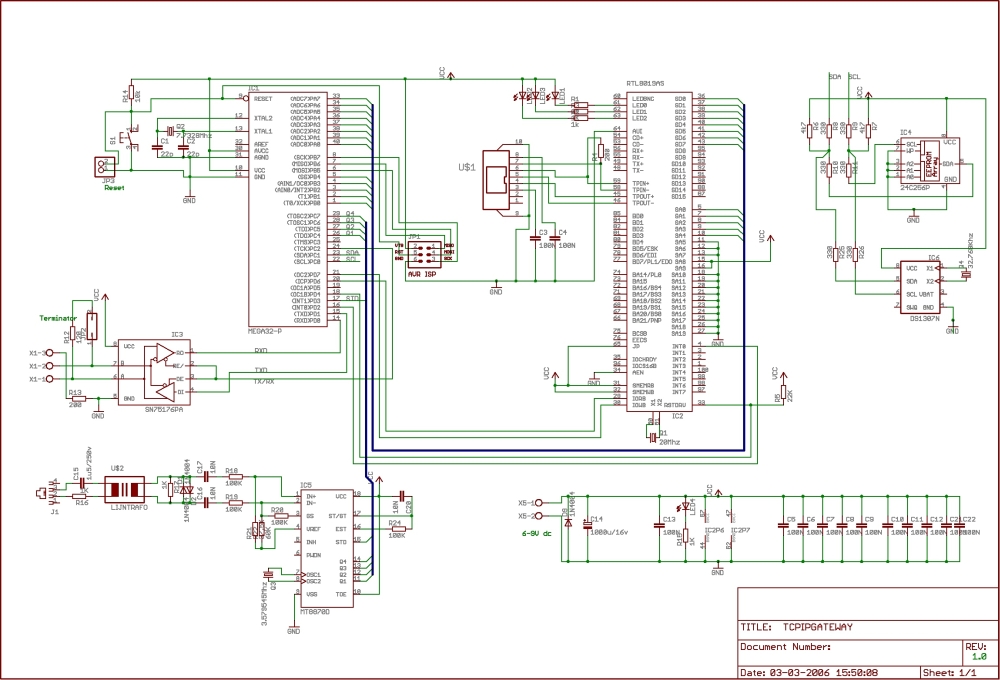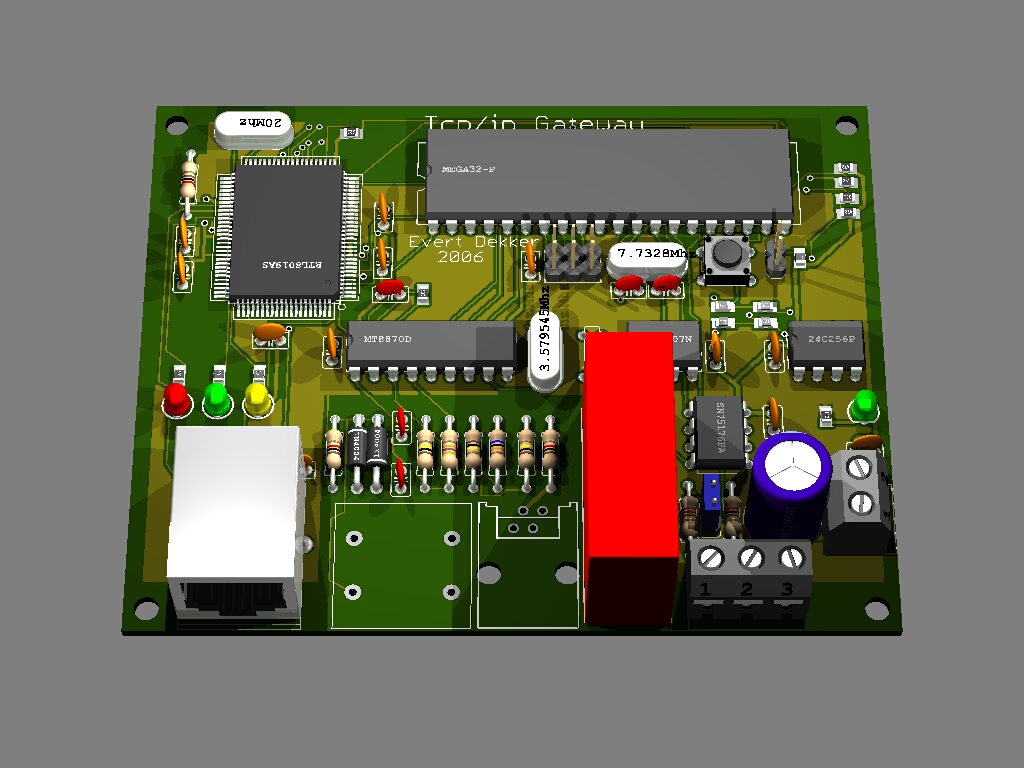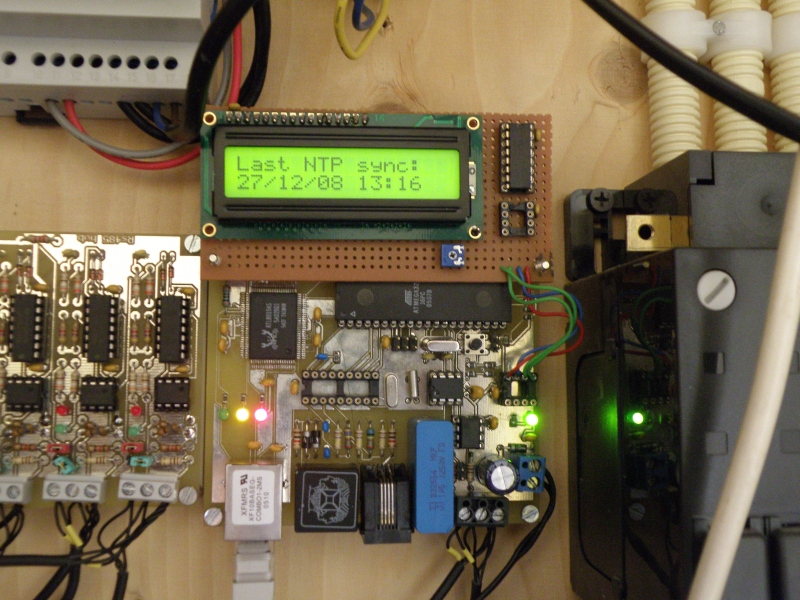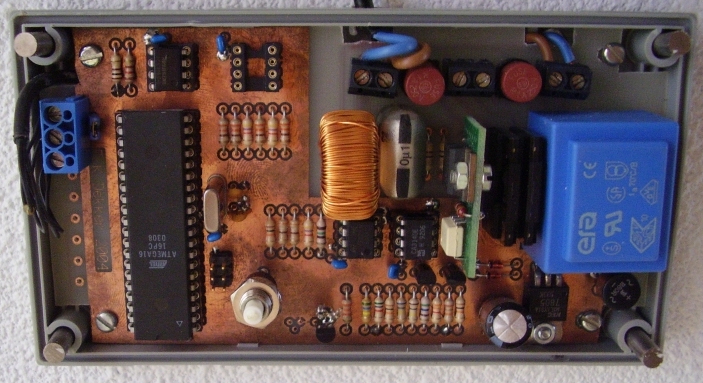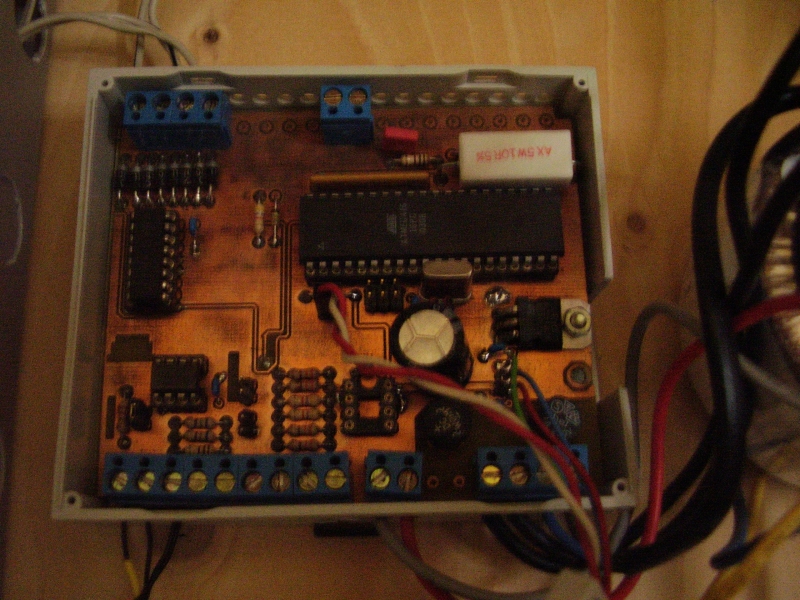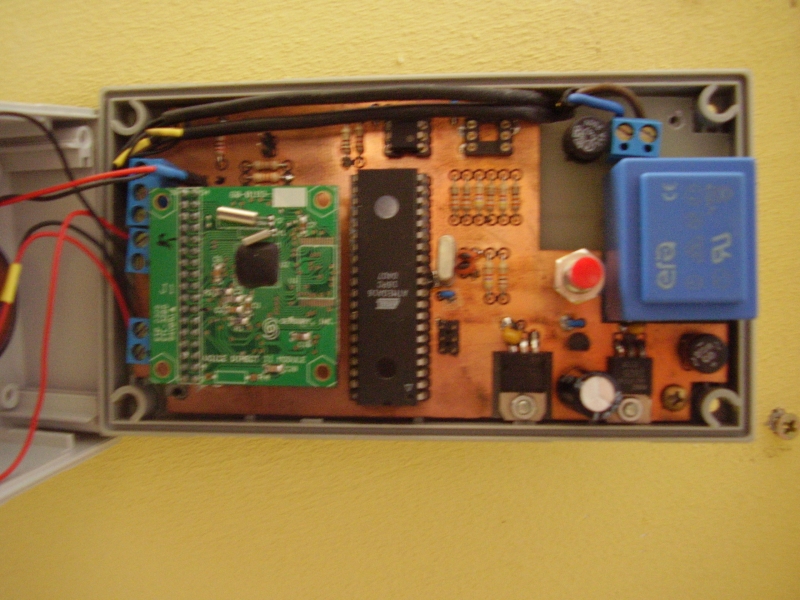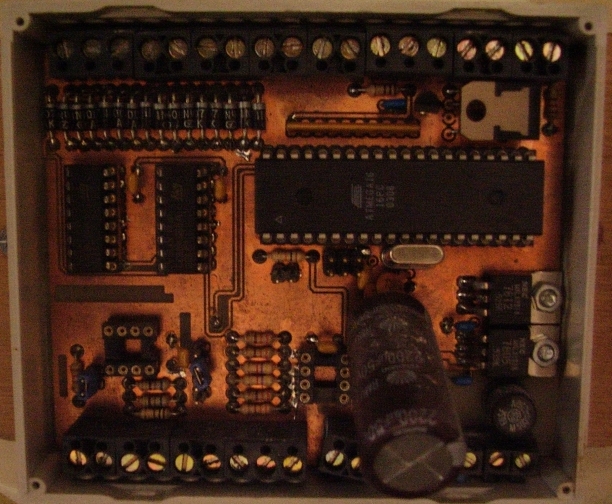The Tcp/ip gateway is used as bridge between the
Joshua bus and Tcp/ip network. There’s also an CLID (caller id) for the POTS phone line implanted.
First of all I like to thank Ben Zijlstra
† for his RTL8019AS sub-routines and examples.
With the HTTP protocol you can access the gateway’s web server and control the
Joshua bus with a web interface.
With the UDP protocol you can send a message(command) over the
Joshua bus .
The gateway wil synchronize with a timeserver on the internet trough the NTP protocol and keeps his Ds-1307 real time clock updated.
The CLID will monitor incoming calls and transmits the numbers over the
Joshua bus.
Update: Tcp/ip Gateway is finished and in use now. All the clocks in the Joshua bus are now every hour synchronizes with the NTP server. All the devices on the Joshua bus can now be controlled with a web interface trough tcp/ip or direct controlled over UDP.
The Caller id part will not be use because my adsl modem has this option also build in.
